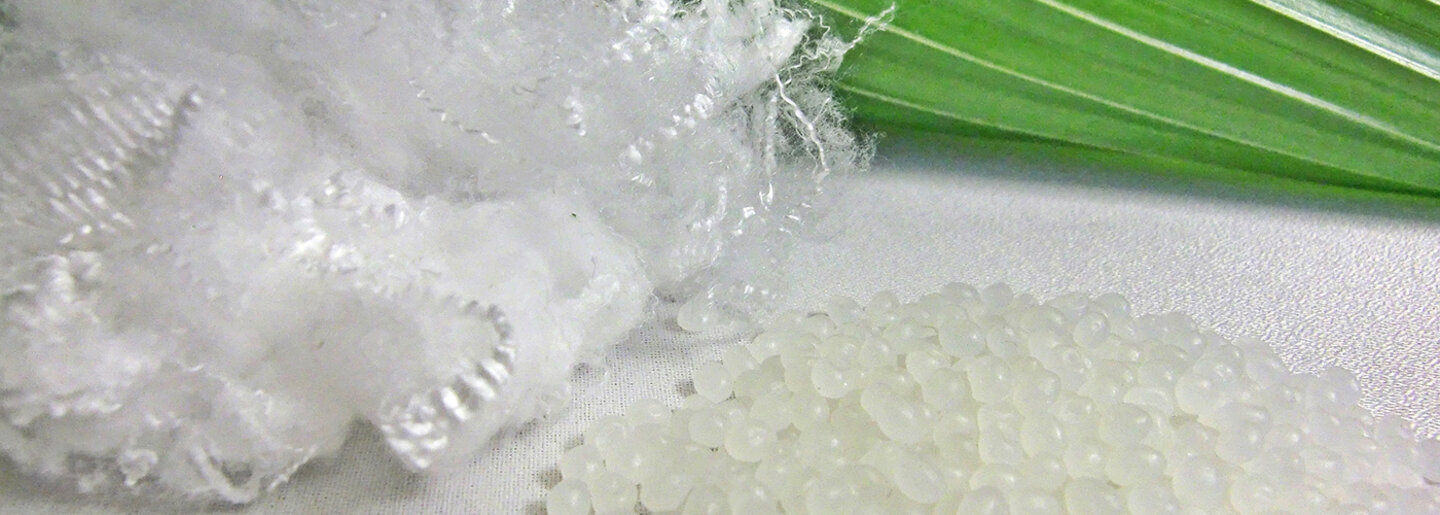PLA - the raw material
PLA is mainly a cereal-based product (generally using maize). But scientists are currently developing a process that will allow us to manufacture biopolymers from biomass (plant residues) in the future, and to create PLA even out of methane and carbon dioxide.
PLA fibres are a sustainable alternative to petroleum-based fibres and provide a basis for intelligent materials with added functions, for new applications and for niche products. They are as economical as they are efficient.
From PLA, it is possible to produce a primary material that can be used in countless different applications. This is especially true when PLA products are used in combination with other biodegradable materials, so that at the end of its life cycle, the entire product can be disposed of without harming the environment.
PLA - advantages at a glance
- Made of 100% renewable raw materials
- Up to 70% less CO2 is emitted and up to 42% less energy is consumed during the raw material production process
- Recyclable and 100% biodegradable (industrially compostable)
- Good UV stability
- Good fastness to light
- Good wicking properties (important in functional apparel, for example)
- Higher elasticity than PET
- Low dyeing temperature of 110 °C means energy savings during the dyeing process
- ISEGA certification for selected PLA fibre types used in hot water filtration applications (tea and coffee filters) and for packaging materials that come into contact with foodstuffs
PLA staple fibres product range
The product range includes both homopolymer types and bicomponent fibres (core/sheath: PLA/PLA):
- Fibres for mechanical bonding (high-volume nonwovens, e.g. nonwoven mattresses)
- Fibres for spunlace/hydro-entanglement (wet wipes, hygiene)
- Fibres for wetlaid, uncrimped wet and dry (technical papers, hygiene products, food packaging)
- Bicomponent fibres for heat bonding (wet wipes, hygiene products, nonwovens for agriculture)
- Hollow fibres for fill products
Fibres can be manufactured in a way that is precisely tailored to your individual application. The following data gives an initial indication of the range available for our fibre production:
Fibre fineness: 0.6 dtex (microfibres) to 6.7 dtex
Staple cut length: 4-80 mm
Fibre profiles: Round, trilobal, hollow fibre
PLA fibres - supply and packaging
Available in: Batches
Packaging: Bales, sacks, big bags

